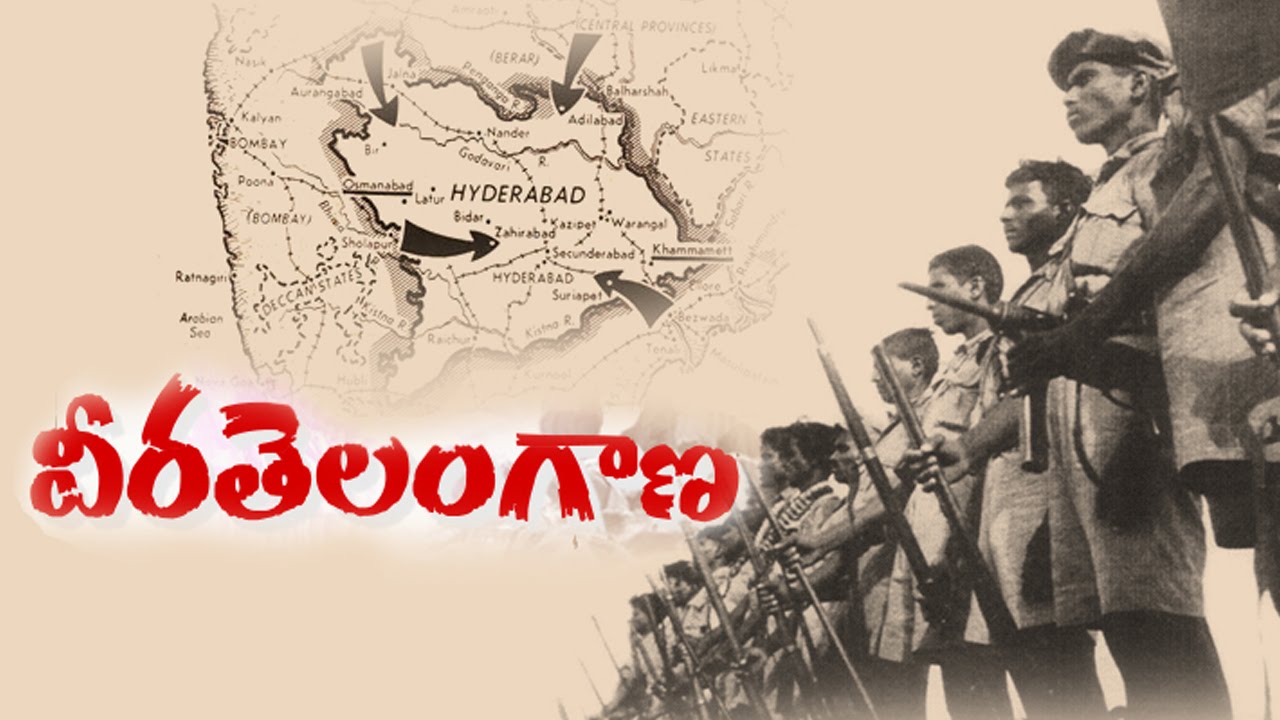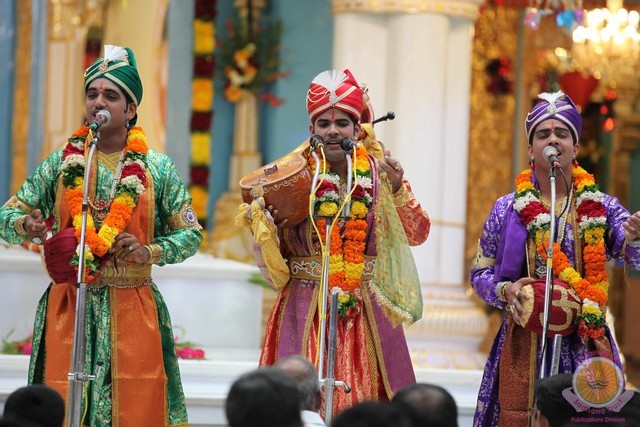While high culture is the bedrock of a society and its values, it is also necessary for the upper and middle classes to maintain their links with the masses. A truly troubled society is one with an elite that finds more in common with foreign elites than its own common people.
As such, along with appreciating Sanskrit and high culture Telugu poetry, it is also important to survey the folk arts that vibrantly define the masses. One such Andhra tradition is Burrakatha.
History
Famous for its ability to not only provide entertainment, but also communicate ideas, Burrakatha was a mainstay of political movements in our part of India. Mostly notably, it was used by Telugus in Madras Presidency (Kosta and Rayalaseema) and in Hyderabad State (Telangana), to fight the rule of the British and their lackey, the Nizam. In fact, both these tyrannical regimes banned Burrakatha, especially in the 30s and 40s.
It was used to great effect in Telangana as part of recruitment drives for the communist revolutionaries who stirred the masses up against exploitation by the Nizam & his Doras.
 Whether it was the memorialization of a patriot like Alluri, Sitarama Raju or the inspiration of one like Chakali Ailamma, Burrakatha has a long and dear history in the heart of the son (and daughter) of the soil.
Whether it was the memorialization of a patriot like Alluri, Sitarama Raju or the inspiration of one like Chakali Ailamma, Burrakatha has a long and dear history in the heart of the son (and daughter) of the soil.
Characteristics
Burrakatha is the traditional Telugu form of narrative entertainment, and as we’ve shown, was popular and influential in both our states. Contrary to some recent pop culture definitions, the term ‘burra’ itself originates from Tambura: the traditional instrument of our itinerant bhakti saints, most notably the divine Narada mahamuni himself, as well as our own Annamacharya.

Katha of course, is the sanskrit word that means ‘story’. The classical high art of tambura-katha became the colloquial Burrakatha.[4] Hence we see the descent of this vibrant folk art of the masses. That is the value of high culture.
Moving on, the main performer of this tradition is referred to as the kathakudu. With modified castanets, the lead can then set the tempo of the song with its beats. He is traditionally accompanied by two drummers, playing an instrument known as the dakki, each with his own purpose.
The first drummer is referred to as the rajakiya. While both are masters of the earthen drum, he is the one on the right, and thus, speaks on issues of cultural and political importance. Correspondingly, the drummer on the left is called the hasyam, as he provides the comedic relief and humour to punctuate the performance and provide variety. It should be noted that performers are not only men. Women too are frequently artistes participating in this tradition.
Though devotional elements are used in a performance invocation (as is traditional in Kuchipudi and Bharatanatyam as well), it quickly moves to the introduction of story, the main plot, and concludes with the refrain of the narrative. Burrakatha comes in three types: The Sacred, the Historical, and the Political.
While it is generally two to three hours long, some performances can actually take place over two or three days during festivals or specially occasions. Despite television and our fast paced modern life making it difficult to dedicate long periods to it, even the busiest white collar worker or c-suite executive has 60-90 minutes to spare a week or a month or even a year. Whether in modified form to suite present fashion or in all its traditional small town glory, Burrakatha must find a place, however occasional, in the busy schedules of today’s Telugus.
Future
As is the case with Andhra and Indic Culture in generally, the prognosis for Burrakatha has not been encouraging. The tradition today is highly neglected. Those with wealth and influence have not, as with Haridasus, patronized the artistes and ensured them a livelihood.
When the custodians of a tradition are not supported by their community, they let go of it and the tradition dies. Folk art animates the rural areas and connects with them not only on a cultural level, but also on a political one. It is not just the great patriot of the Telangana Sayudha Poratam in the 40s, but even the common man of Kosta in the 2000s who is animated by it and emotively linked with it. While Burrakatha raised the banner of righteous rebellion in one, it raised road safety awareness in another.
Tragically, in the modern era, not only the popularity but the integrity of this once respected artform has declined tremendously. Lascivious and prurient song and dance have come to defined this filmy incarnation appropriated and projected by Tollywood. As a result, some have begun to declare its untimely demise. Vulgar item numbers have added yet another casualty to their list of victims of poor taste. So let’s take a trip back to classic cinema to see how it’s properly done:
Herein lies the first step to reinvigorating this Telugu Tradition.
References:
- http://timesofindia.indiatimes.com/city/visakhapatnam/Burrakatha-loses-sheen-sans-patronage/articleshow/18012802.cms?referral=PM
- http://www.thehindu.com/todays-paper/tp-national/tp-andhrapradesh/burrakatha-works-magic-on-crowds/article307655.ece
- http://www.thehindu.com/news/cities/Vijayawada/french-burrakatha-exponent-feted/article5907462.ece
- http://www.nrityanjali.org/th_bur.html







